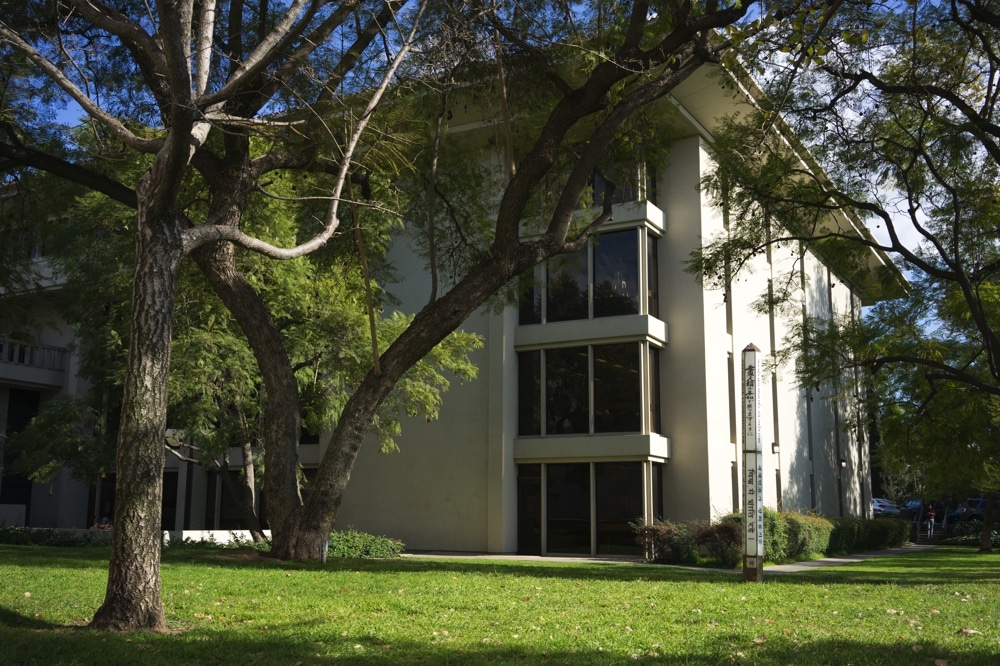
A group of faculty, administrators and students has been working to widen the scope of restorative justice at Occidental College over the last two years, starting as a temporary working group before becoming a permanent committee, according to an email sent to the Occidental community Sept. 3 by Dean of Students Rob Flot. In the email, the Restorative Justice Committee stated its intention to incorporate restorative practices into all aspects of Occidental life, whether for community-building or conflict mediation. Restorative justice is an alternative approach to problem-solving practices that focuses on healing and community-building, according to the Centre for Justice and Reconciliation. In the past year, restorative justice has made headlines as proponents advocated for the use of restorative practices in education and the criminal justice system.
Associated Students of Occidental College (ASOC) members used restorative justice facilitation for the first time at their annual all-branch retreat Oct. 6, according to ASOC President Nina Srdić Hadži-Nešić (junior). Embedding restorative justice practices into ASOC as a whole has been a discussion for a long time, according to Vice President of Internal Affairs Wafa Abedin (junior).
“We’ve been talking about incorporating RJ [restorative justice] into ASOC since the beginning of time. When I was a first year, we were talking about it. When I was a sophomore, we were talking about it. We’re still talking about it. Now we’ve just taken more concrete steps into incorporating it into ASOC,” Abedin said.
According to the Occidental College Restorative Justice Working Group Summary 2018-2019, the working group was formed in Fall 2018 with the intention to implement restorative practices into all areas of campus. The working group was formalized as a committee by the Faculty Council at the start of this semester and is co-chaired by Project S.A.F.E. Senior Manager and Survivor Advocate Marianne Frapwell and politics department Chair Thalia González. González said the 2015 occupation of the Arthur G. Coons Administrative Center by student protestors was one of the motivating factors in the consideration of restorative practices on Occidental’s campus.
“There was an increased level of awareness — relative to faculty, because I won’t speak for students specifically — during the Occupation,” González said. “I think that there was a set of demands that lent themselves to thinking about the possibility of a restorative response.”
González, a nationally recognized expert on restorative justice, is currently teaching a seminar on the field’s practices and taught the same course two years ago. The course is split into two tracks, research and practice, and allows students in the practice track to be trained as restorative justice practitioners. Two years ago, student-led research from the course indicated a shared desire for restorative justice as a means of community-building.
“In the Spring of 2018, my class did a survey of the student community that asked: “‘What do you know about restorative justice?’ ‘Where do you want it?’ The most significant articulated need was around community-building in residence halls and within student organizations,” González said.
This community-building aspect of the committee has continued to grow, according to Alejo Maggini (sophomore), a resident advisor and member of the committee.
“It involves every stakeholder of the community. You have the Secretary of the Library [Marsha Schirring], Residential Education and Housing Services staff, students and professors,” Maggini said.
Maggini said he believes the transition from a working group to a committee offers the restorative justice group more legitimacy as an organization. Additionally, it allows them to act as a resource for other on-campus collectives, including ASOC.
Srdić Hadži-Nešić envisioned restorative justice practices as a way of improving communication and collaboration within the different branches of ASOC.
“I saw restorative justice as a means to better communicate: getting people to sit down into talking circles and share their values, their communication or leadership styles, anything that would help members of ASOC see where each other is coming from,” Srdić Hadži-Nešić said.
Abedin echoed the desire for community-building within both ASOC and the Restorative Justice Committee.
“I thought it was a better idea to create a mutually beneficial relationship with our on-campus resources, so that we’re not just getting a service out of it but we’re also helping them and giving back to the community,” Abedin said.
In addition to student organizations, restorative justice practices are applicable to on-campus departments such as Title IX and REHS, according to González.
Within the Title IX office, there is a desire to create a response to cases that do not reach a formal process.
“What is it to have a restorative option and restorative response for that?” González said.
These are questions that the Restorative Justice Committee hopes to address and develop throughout the semester.
González, who will be on sabbatical next year, said the Occidental community has the responsibility to continue to push restorative justice efforts forward.
“Restorative justice doesn’t live with anybody, and nobody owns it,” González said. “In community building, the first word is community. It should be owned by the community.”
![]()


































